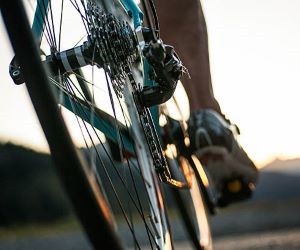Learn how to deal with punctures on long rides with prevention tips, repair techniques, and smart gear choices to keep rolling without stress.
HOW DO I PREVENT SADDLE INJURIES IN CYCLING?
Saddle injuries are among the most common issues cyclists face, ranging from minor chafing to more serious pressure sores and nerve pain. These problems not only disrupt training but can also derail performance if left unaddressed. The good news is that with the right combination of equipment choices, riding techniques, and personal care, most saddle-related injuries can be prevented. This guide covers everything from optimal bike fit and saddle selection to clothing, hygiene, and on-bike adjustments, giving you a complete strategy for pain-free cycling.

Understanding saddle injuries
Saddle injuries occur when repeated pressure, friction, or poor posture causes damage to skin, muscles, or nerves in the pelvic region. For cyclists, the issue is magnified by long hours in a fixed position combined with repetitive pedaling motion.
Types of saddle injuries
Chafing and skin irritation from constant friction.
Saddle sores caused by clogged pores, bacteria, and pressure.
Numbness from nerve compression in the perineal area.
Soft tissue pain due to incorrect saddle shape or poor fit.
Why injuries develop
Most saddle injuries stem from a combination of factors: poor bike fit, inappropriate saddle choice, unsuitable cycling shorts, and inadequate hygiene. Recognizing the underlying cause is the first step toward prevention.
Ignoring early warning signs—like mild discomfort or skin redness—often leads to more severe injuries that can sideline training for weeks. Prevention, therefore, is far more effective than treatment.
Preventive equipment and clothing
The right gear plays a major role in reducing saddle injuries. From saddle design to cycling shorts, equipment choices directly influence comfort and pressure distribution.
Choosing the right saddle
Not all saddles suit every rider. Key considerations include width, shape, and padding. A saddle that is too narrow or too wide can increase pressure points. Cut-out designs reduce perineal pressure and improve blood flow, making them popular among endurance riders.
Measure sit bone width to match saddle size.
Test multiple models to find the best fit.
Prioritize shape and support over extra padding.
Cycling shorts and chamois
Quality cycling shorts with a well-designed chamois are essential. The pad should provide cushioning without creating bulk, and seamless construction reduces friction. Avoid wearing underwear under cycling shorts, as seams can worsen chafing.
Investing in high-quality shorts may seem costly but pays off with fewer saddle-related problems over time.
Bike fit and adjustments
A professional bike fit ensures your saddle height, tilt, and setback are aligned with your anatomy. Even small misalignments can create unnecessary pressure. Adjustments such as tilting the saddle slightly downward or raising handlebars can alleviate discomfort and prevent injury.
Riding technique and personal care
Even with the right equipment, improper riding habits or poor hygiene can still lead to saddle injuries. Incorporating smart practices into your routine helps keep discomfort at bay.
On-bike techniques
Standing up periodically relieves pressure and improves circulation. Shifting weight slightly forward or backward on climbs and flats helps distribute load across different areas. Smooth pedaling also reduces friction compared to uneven, choppy strokes.
Hygiene practices
Post-ride hygiene is critical. Always shower immediately after riding and wash cycling shorts after every use. Anti-chafing creams or chamois creams provide an extra layer of protection against friction and bacteria.
Apply chamois cream before long rides.
Avoid sitting in damp shorts after training.
Treat minor saddle sores promptly to prevent worsening.
Building resilience
New cyclists often experience discomfort simply due to lack of adaptation. Gradually increasing ride duration allows skin and muscles to adapt, building tolerance over time. Consistency paired with preventive care reduces injury risk dramatically.
By combining the right saddle, clothing, fit, technique, and hygiene, you create a comprehensive defense against saddle injuries. This proactive approach ensures more comfortable rides and sustained performance over the long haul.
YOU MAY ALSO BE INTERESTED






